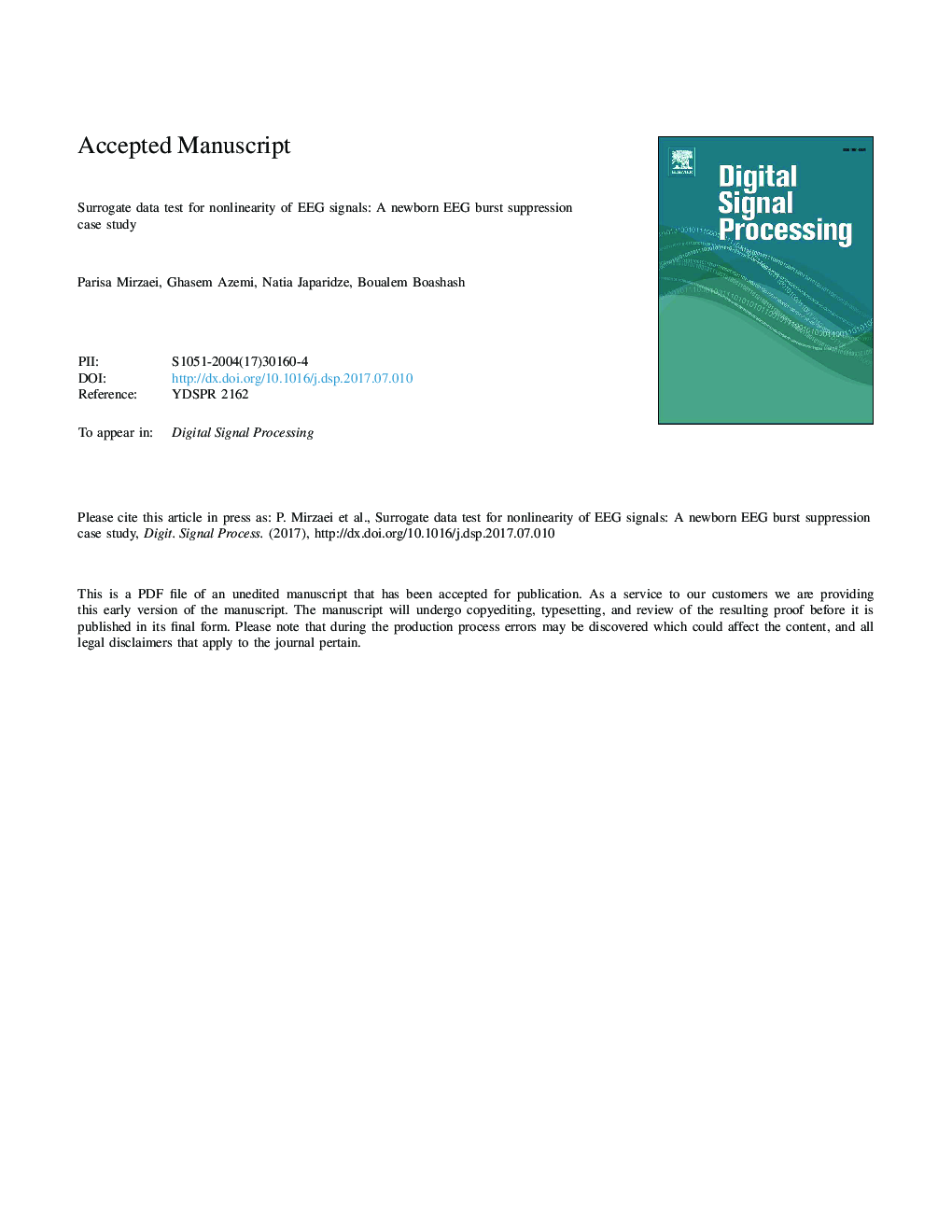| Article ID | Journal | Published Year | Pages | File Type |
|---|---|---|---|---|
| 4973758 | Digital Signal Processing | 2017 | 32 Pages |
Abstract
This paper applies the surrogate data method to investigate the presence of nonlinearity in neonatal electroencephalogram (EEG) burst suppression (B/S) patterns in order to rationalize the use of nonlinear methods for automated detection of such patterns. To generate surrogate data, the statically transformed autoregressive process (STAP) algorithm is deployed, and, the correlation dimension (CD) and asymmetry due to time reversal (REV) are applied as discriminating statistics. The results of the surrogate data test demonstrate the nonlinearity characteristic of real neonatal EEG signals during both burst and suppression phases at the 0.05 significance level. The evidence of nonlinearity is found in 90% and 87% of bursts and suppressions respectively. Furthermore, the ability of nonlinear tools in detecting B/S patterns in multichannel neonatal EEG signals is investigated using receiver operating characteristic analysis. The experimental results show that the CD outperforms existing methods based on the nonlinear energy operator.
Related Topics
Physical Sciences and Engineering
Computer Science
Signal Processing
Authors
Parisa Mirzaei, Ghasem Azemi, Natia Japaridze, Boualem Boashash,
